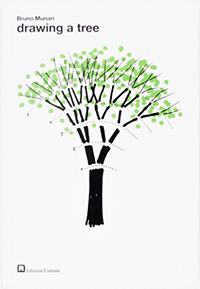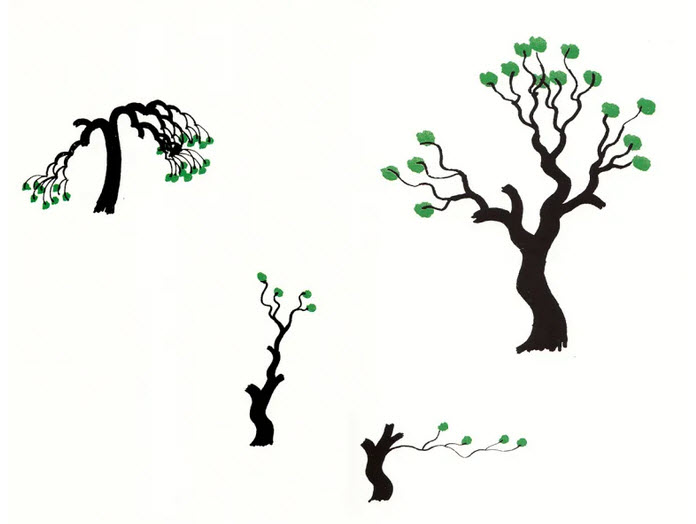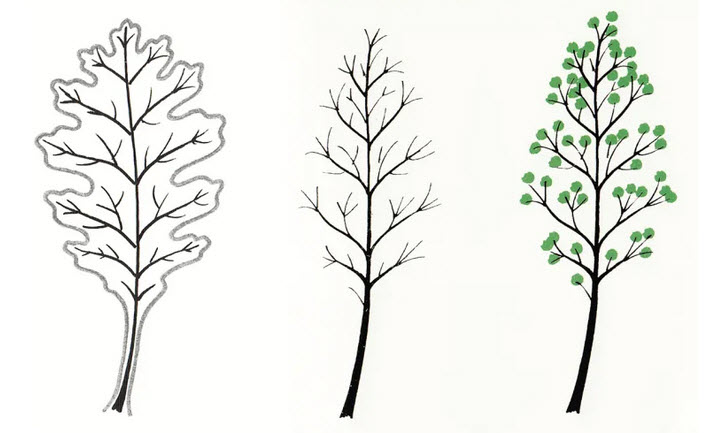
“When drawing a tree, always remember that every branch is more slender than the one that came before. Also note that the trunk splits into two branches, then those branches split in two, then those in two, and so on, and so on, until you have a full tree, be it straight, squiggly, curved up, curved down, or bent sideways by the wind”.
I knew Bruno Munari’s book, but I wouldn’t have been able to give an in-depth review of it as Maria Popova at The Marginalian of which I leave you with some reflections to encourage you to read it in full:
“…
Inspired by Leonardo da Vinci’s schematic study of tree growth, this masterpiece is a work of visual poetry and existential philosophy with the appearance of a drawing guide.

Munari draws the tree as versions of the fractal pattern adapted to his everyday challenges.

Drawing on the long human tradition of seeing ourselves in trees, Munari offers a tender reminder that trees, like us, take their shape and sculpt their individual character in the act of healing from pain.
In the “network of nerves” of an oak leaf, he finds a miniature of the branching pattern of the entire tree.
(This resemblance, of course, is what fractals explain: the leaf at the tip of the branch next to the trunk is only the finest extension of the fractal structure).

Exactly two centuries after William Blake issued his fiery indictment of inattention and numbness of life: “The tree that makes some weep with joy is in the eyes of others just a green thing that stands in the way … As a man is, so he is, see. ” What emerges from the pages of Munari’s generous little book is an invitation to look at green things more intimately as a training ground to love the world and its diversity more joyfully.
…”
Be sure to visit the “Llibres Verds” from 3 Peus de Gat nor this link to access more information about Bruno Munari.
